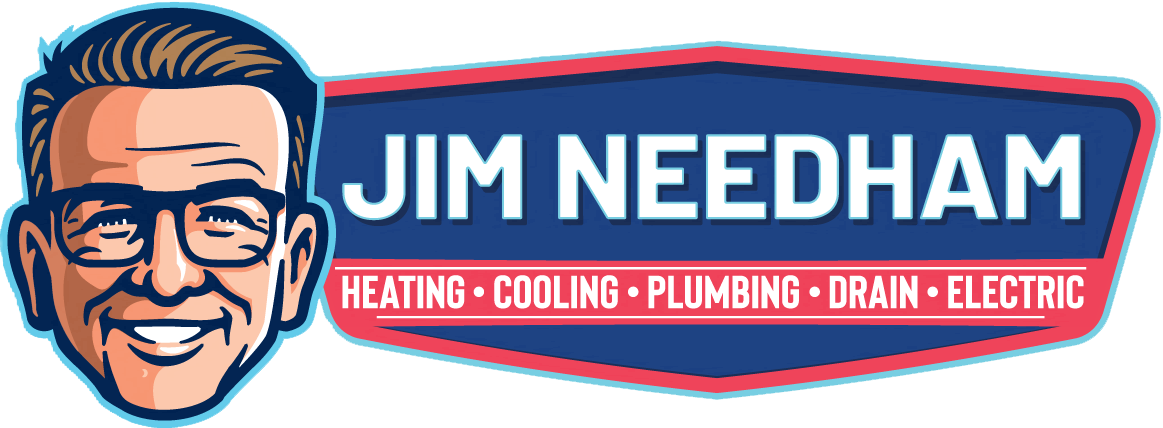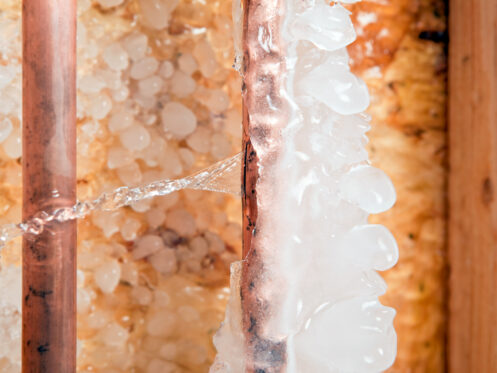With winter temperatures in Thornton, CO regularly falling below 20 degrees Fahrenheit, the risk of freezing pipes is near-constant throughout the cold season. Fortunately, with the 10 tips that follow, you can protect your indoor and outdoor pipes from expansion-related cracks and ruptures. You can also safely defrost them.
1. Schedule a Pre-Season Furnace Tune-Up
Among the best ways to prevent freezing pipes is by maintaining a warm building interior. Scheduling a pre-season furnace tune-up will limit the risk of mid-winter breakdowns and heating emergencies. These visits give HVAC technicians the chance to address developing problems while they’re still small, optimize airflow, and check for hot and cold spots.
Not only will sufficient indoor heat keep your inside pipes from freezing, but it will also provide limited protection to pipes at the building exterior. Along with other preventive strategies, the residual heat that radiates from your exterior walls should keep your outdoor pipes frost-free.
Take Good Care of Your HVAC Ductwork, Too
When scheduling annual heater maintenance, have your HVAC ductwork inspected and maintained as well. If your HVAC air ducts have loose connections, tears, perforations, or other structural problems, heated air might not reach every room.
2. Have a Backup Generator Installed
Another way to keep your indoor temperature sufficiently high is to install a backup generator. A generator will seamlessly transfer your home’s power demands to its own power supply if your utility service is ever interrupted. In the event of an extended power outage, having a generator helps to keep household members safe and prevent serious plumbing system damage.
Don’t Forget Surge Protection
To protect your standby generator and your HVAC system from surge-related damage, it’s also a good idea to install whole-house surge protection. When power outages are resolved, higher-than-normal voltage travels into electrical systems. Surge protectors divert this extra electricity into the ground so that home heating systems and other electronics and appliances are unaffected.
3. Insulate Exposed Pipes at the Building Exterior
In addition to maintaining a fixed, functional source of whole-house heating, you should insulate your outdoor pipes. Wrapping these fixtures with high-quality insulating materials will minimize heat loss, reduce noise, and provide condensation control as outdoor temperatures rise.
Insulate Exposed Indoor Pipes in Unused Building Areas
When insulating exposed pipes, don’t forget the exposed pipes in remote building areas that your HVAC system doesn’t directly service. For instance, you might have exposed pipes in your basement or garage that could freeze over even when your heater is on.
Mitigate Long-Term Temperature Control Problems in Remote Rooms
If there are exposed pipes in your attached garage, basement, attic, or other remote area, it’s also a good idea to install a fixed heating solution. This is especially true if these remote spaces are regularly used by residents as bedrooms, home offices, or dens. Installing a ductless mini-split system for these spaces will add value to your home, make the rooms more comfortable, and greatly minimize your risk of having exposed pipes freeze over.
4. Keep Your Indoor Temperature at 55 Degrees or Higher
Even when you’re away at work or out of town on vacation, never set your home’s temperature lower than 55 degrees Fahrenheit. Attempting to save money by maintaining a lower temperature could lead to expensive pipe replacements.
5. Install a Smart Thermostat
Programmable thermostats are worthy upgrades from standard thermostats for homeowners seeking energy savings, reduced energy waste, and a feasible way to limit the risk of human error and oversights in temperature management. However, when it comes to preventing freezing pipes, smart thermostats are a far better choice.
Smart thermostats are Wi-Fi-enabled. They also come with branded apps that you can download to your tablets or mobile phones. With these devices, you can monitor and adjust your indoor temperatures remotely to reflect changes in weather and needs.
6. Winterize Your Outdoor Taps
Every year, before winter sets in if possible, weatherize your outdoor taps. Start by disconnecting and draining your garden hoses. To extend their lifespans, you can store your garden hoses in your garage or outdoor shed until spring.
Next, turn the water to each outside spigot off using their local shut-off valves. Open the taps to let their remaining water flow out. Finally, cover your spigots with frost-free hose bib covers.
7. Have Pressure-Reducing Valves Installed
Freezing pipes burst due to the expansion of trapped water. However, rising pressure within freezing pipes contributes to pipe damage as well. If your pipes are freezing or in danger of freezing, you may be able to prevent actual ruptures by opening their pressure-reducing valves. If your pipes don’t currently have pressure-reducing valves, consider having them installed.
8. Check the Flow of Water Before Defrosting
It’s important to assess the severity of freezing before attempting to manually defrost your pipes. If your pipes are still in the process of freezing, you should get small but steady trickles of water when your taps are fully opened. If little to no water comes out, your pipes are thoroughly frozen, and you’ll need a plumber to mitigate the problem. With completely frozen pipes, there’s a greater risk of causing structural damage by applying the wrong defrosting techniques. There’s also the risk of dealing with already-ruptured pipes hiding behind drywall or other building materials.
9. Use Low and Steady Heat to Defrost Partially Frozen Pipes
Your first inclination could be to super-heat your pipes to promote rapid melting. However, you should never use blow torches, blow dryers on their hottest settings, or open flames. Some pipe materials melt or crack when they become too warm. The rapid contraction of frozen metal pipes when sudden and significant heat is applied can cause these fixtures to split, crack, or break.
When water is moving slowly, try placing warm towels on accessible pipe sections. Open the doors to under-sink cabinets. and let warm indoor air flow in. You can also use a hair dryer on its lowest setting to eliminate visible frost and minor buildups of internal ice. One of the best ways to defrost moderately frozen pipes is to simply turn your taps on and keep them on.
10. Check for Drain Blockages and Hidden Leaks
As you test your pipes and melt minor ice blockages with running water, pay attention to your drains. Slow-moving and blocked drains indicate potential freezing at the outside sewer line, especially if all your drains slow up at once. This is a problem that only a licensed plumber can resolve.
Know When to Call for Help
The most important thing to remember when dealing with frozen pipes is that there’s never a bad time to call a plumber for help. Even if you’re able to safely and successfully thaw your pipes on your own, you should always finish this process by scheduling a whole-house plumbing inspection. This inspection will identify any slow and hidden leaks, pipe damage, loose connections, or other problems that you might have missed.
Homeowners in Thornton, CO can count on us for superior plumbing, cooling, heating, and drain cleaning services. We also provide water heater service and HVAC air duct cleaning.
For help preventing or thawing frozen pipes, give Jim Needham Heating Cooling Plumbing and Drain a call!


